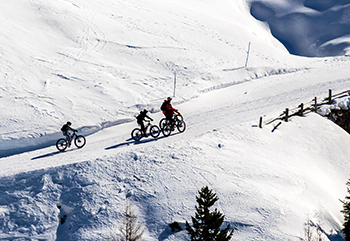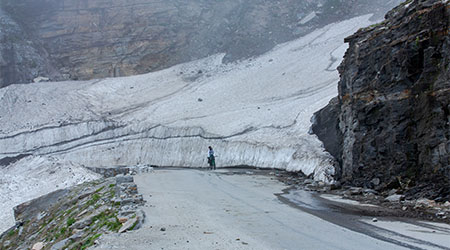Tips to Ride in a Group

You must have seen multiple cyclists riding in close proximity to each other. Think, 'Tour de France' and similar races. They almost feel synchronized and amazingly, they haven't crashed into each other. There is no magic in this well-synced group cycling, but there are a few rules, do's, and don'ts that each cyclist in the group follows.
Before we share them with you, we'd like to list the benefits of this fantastic group activity.
a) You automatically get an excellent workout - Keeping up with the pace of the group will provide you with a better workout than you gingerly riding on your own.
b) You get to meet new like-minded people - The group becomes your posse or clique of sorts with whom you can enjoy cycling activities or even beyond cycling
c) You learn from other cyclists in the group - You have all sorts of cyclists, some with more experience than you. Cycling with more experienced riders can teach you multiple things and improve your riding skills.
d) Group cycling is safer - Safety in numbers, as they say, is true for cycling or when you ride in a group. A group of cyclists is more visible than alone or a couple of cyclists here and there. The chances of meeting with an accident get significantly reduced.
e) Your efficiency as a cyclist is greatly improved - So another significant benefit to group cycling is that it is easier and more efficient than solo cycling because of the advantage of drafting. Drafting is where cyclists cut down on their wind resistance because of the sheltering behind the lead rider, which they benefit from and use less energy. This drafting technique is what race cyclists use, and the group is referred to as a 'peloton.'

With all these great benefits in group cycling, all you need to know is how to cycle in a group, which we will duly explain in a few points here. Let's start.
1) Follow the System
There is a system in place, which will often be two lead riders, and everyone follows behind them. The front rider or riders indicates that they would like to pass on the mantle of being the lead cyclist, and the rider behind takes their place while they move to the back of the pack. All the movement is done neatly and in a synchronized manner and is more through sign language than shouting aloud. At first, you may indicate to the group if you prefer to follow rather than lead for some time or until you get the know-how. While it's mostly two alongside, it could also be a single file depending on space availability. If there is oncoming traffic, the formation may temporarily move to a single file or until whatever is causing the disturbance has passed.
2) Use the Correct Hand Signals
You will have to communicate to the others in the group in case of a hazard, road disturbances, or any other similar situation. Make sure you use what is universally known to the group, preferably in the form of hand signals. Yelling or shouting communication may not always work since some riders are way back in the pack may find you inaudible. And with the environment din or other traffic noise, shouting may add to the already noisy surroundings In group riding, every rider is responsible for themselves and the group's safety. The role of the lead rider is to be the eyes of the peloton, and all other members following the leader have to make sure that important information from the lead rider is passed on to everyone in the group So in case, the group rider notices a pothole, debris, or any obstruction on the road coming up, the rider needs to indicate using hand signals. The common hand signal that every group member should know and understand -is pointing for obstacles, direction traveling, pointing left or right, and slowing down if need be so that every rider in the pack will slow down and avoid an accident.

3) Avoid Distractions
You shouldn't be engaged with listening to music or a podcast while you are group cycling. It is dangerous since you may miss out on verbal warnings and vehicular traffic horns.
4) Riding Position
While multiple cyclists ride together in close proximity, an event with even a single cyclist will affect the peloton. So the expectation is that the front wheel of any cyclist should be at least one cycle length behind the rear wheel of the cyclist riding in front. There should be at least six inches to the minimum in a pinch. And most definitely no overlapping of wheels. And your shoulder should be at arms-length from the cyclist riding alongside and bar to bar. That means the rider's handlebars alongside should be in the same straight line. If the rider to your side is a bit slower, you need to manage their pace. Gaps should not be there in a peloton. If one does form ahead of you, pedal a bit harder and slowly close the gap.
5) No Sudden Movement
Again, for similar reasons as 'Riding Positions', no sudden brakes, swerving without a warning, unexpected increase or decrease in pace, or similar. Any sudden movements are bound to create tension with the other group riders or, worse, a pile of fallen down bikers.
6) Use Mudguards
If you don't use mudguards and you come across a muddy and wet area, the person riding right behind you stands the chance of getting their face splattered with whatever your rear tyre chooses to throw up. Of course, mudguards will also protect you from dirt and grime as well. Some groups will insist you add at least clip-on mudguards when group riding.

Remember, group cycling is a group activity and not a race. So there's no point or nothing to be achieved for cycling faster than your group members. In reality, it is detrimental to the group and can cause members to fall and possibly cause injuries and do no favour with the other members.
Follow these tips, and you can effortlessly join a group and become a part of a peloton.
What are your thoughts on riding as part of a group of cyclists? Do you have your experience to share? If you do, we'd love to hear about it. Add a comment in the box below.
Related Blogs

Cycling Guides
A Guide To Smooth Riding Through The Winterswinter cycling is one of the best ways to gain confidence in your skills. Here in this guide, we explore winter cycling and prepare a holistic guide for you.

Cycling Adventures
The Iconic And Best Cycling Route In MaharashtraOne iconic cycling route, ‘Mumbai to Goa’, stands out from all the other riding trails in Maharashtra


